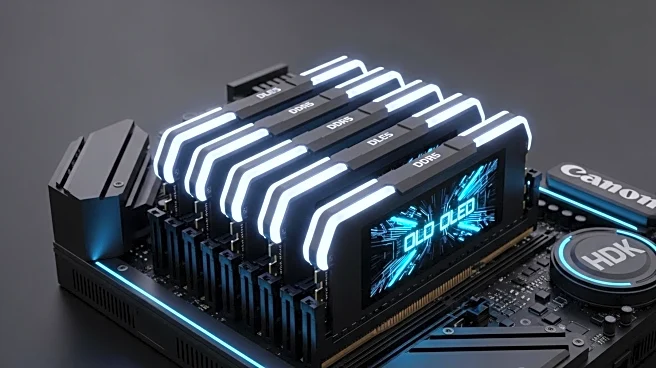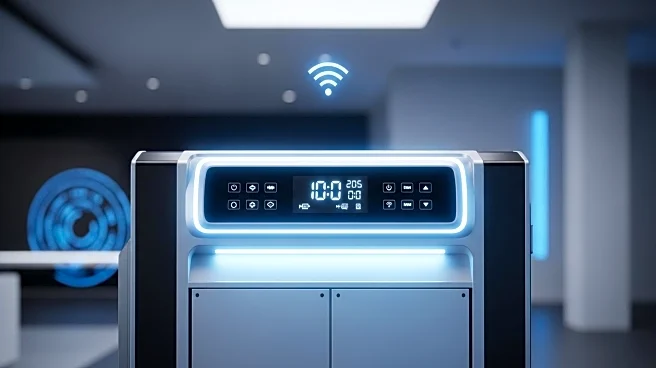What is the story about?
What's Happening?
V-Color, in collaboration with Gigabyte, has introduced DDR5 RAM modules featuring tiny OLED screens. These screens display real-time information such as voltage and speed during the POST process. While designed for overclocking enthusiasts, the practicality of these screens is questioned due to potential visibility issues caused by motherboard cables and dual-channel configurations. Critics argue that the screens offer limited utility, as similar information is accessible through BIOS during the POST process.
Why It's Important?
The introduction of OLED screens on RAM modules reflects a trend towards integrating more visual features into PC hardware. While this innovation may appeal to enthusiasts seeking real-time data, it raises questions about the necessity and practicality of such features. The debate highlights the balance between aesthetic enhancements and functional utility in hardware design. As manufacturers continue to innovate, consumer demand and feedback will shape the future of hardware features, influencing design priorities and market trends.
Beyond the Headlines
The trend of adding screens to hardware components may lead to broader discussions about the role of aesthetics versus functionality in technology design. As consumers seek more visually appealing products, manufacturers must consider the trade-offs between design complexity and practical utility. This development could influence future hardware innovations, prompting manufacturers to explore new ways to integrate visual features without compromising functionality.
AI Generated Content
Do you find this article useful?














